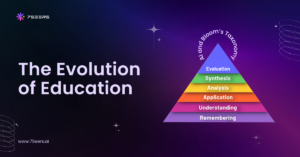Every educator envisions an ideal classroom—one where students are actively engaged, learning deeply, and applying their knowledge meaningfully. Today, this vision is more attainable than ever, thanks to the rapid advancement of artificial intelligence in education.
In the age of AI, teaching is evolving from content delivery to engagement engineering. Innovative methods—collaborative projects, immersive experiences, and personalized feedback—can now be scaled efficiently using AI tools. What once required hours of preparation and coordination can now be generated, adapted, and deployed with just a few thoughtful prompts.
Let’s explore some innovative teaching strategies—and how AI is making each one easier, smarter, and more impactful in higher education classrooms.
Adaptive Learning
What it is: Personalized instruction tailored to each student’s pace and understanding.
AI in action (Higher Ed Example):
In a university-level calculus course, an AI-powered learning platform analyzes a student’s struggle with integration by parts. Instead of simply flagging the issue, the AI generates a customized set of exercises, provides interactive hints, and offers a short video explanation—all tailored to that student’s learning style. Meanwhile, the instructor receives analytics showing which students need intervention and what misconceptions are most common.
Blended Learning
What it is: A mix of traditional face-to-face instruction and online learning components.
AI in action (Higher Ed Example):
In a pharmacology course, students attend lectures twice a week and complete AI-generated simulations online that let them “test” virtual patients. These simulations adapt in real time, creating new drug interaction scenarios based on previous responses. The professor then uses this data in class to discuss decision-making patterns and common errors.
Flipped Classroom
What it is: Students study content at home and use class time for application and problem-solving.
AI in action (Higher Ed Example):
In a mechanical engineering class, students watch AI-curated video lectures at home—each personalized to their knowledge level. The AI quiz at the end of each video diagnoses gaps and suggests review material. In the classroom, the instructor sees a dashboard highlighting who’s ready for advanced tasks and who needs additional support, making class time more efficient and targeted.
Active Learning
What it is: Learning by doing—through participation, discussion, and exploration.
AI in action (Higher Ed Example):
In a world literature course, students are asked to analyze the moral dilemmas faced by characters in classic texts. The AI generates fictional debates between authors or characters using natural language models. Students work in groups to critique the AI’s dialogue, rewrite parts, and perform the debate in class—deepening their understanding of character motivation and historical context.
Project-Based Learning
What it is: Students tackle real-world challenges through long-term, hands-on projects.
AI in action (Higher Ed Example):
In a business analytics program, students are tasked with developing a go-to-market strategy for a sustainable product. They use AI to:
- Generate ideas based on market trends
- Analyze large datasets for competitor insights
- Simulate the outcome of different pricing models
The AI assists not by doing the work but by accelerating exploration and guiding the analysis.
Collaborative Learning
What it is: Students work in groups to achieve shared learning goals.
AI in action (Higher Ed Example):
In a psychology course, students are divided into groups to evaluate a fictional case study. The AI generates unique patient profiles for each group, varying in symptoms, background, and history. Students collaborate to assess, diagnose, and propose treatment plans, then compare outcomes across groups, revealing biases or inconsistencies in reasoning.
Peer Teaching and Feedback
What it is: Students explain concepts to one another and provide feedback.
AI in action (Higher Ed Example):
In a computer science capstone project, students present their code to peers. AI tools evaluate the code for efficiency, readability, and security and suggest feedback templates. Students combine AI-generated insights with their observations to provide structured, thoughtful critiques, improving both communication and coding skills.
Crossover Teaching
What it is: Interdisciplinary teaching that connects concepts across subjects.
AI in action (Higher Ed Example):
In a joint architecture and environmental science course, AI helps students model buildings with energy efficiency in mind. The AI not only suggests sustainable design ideas but pulls in data from climate simulations and material science to show real-world impact. Students then present interdisciplinary proposals that are both creative and evidence-based.
Gamification
What it is: Using game elements to increase engagement and motivation.
AI in action (Higher Ed Example):
In a medical microbiology course, students earn points for completing AI-generated clinical challenges. Each case builds on the previous, and the AI adjusts complexity based on student accuracy and speed. Leaderboards, badges, and bonus challenges keep engagement high without compromising rigor.
Immersive VR and 3D Learning
What it is: Using virtual or augmented reality to simulate experiences and environments.
AI in action (Higher Ed Example):
In a civil engineering lab, students wear VR headsets to enter a construction site simulation. They inspect virtual bridges, test load-bearing limits, and troubleshoot design flaws. The AI adapts to the environment based on student decisions and offers real-time feedback, helping them learn complex spatial reasoning and design dynamics in a risk-free setting.
🔧 Tips for Implementing AI-Powered Teaching Innovation
- Start with Learning Goals
Let your objectives guide your use of AI—don’t let the tech lead the lesson. - Know Your Students
Use AI insights to understand learning styles, gaps, and interests. - Train Students to Use AI Thoughtfully
Teach them how to use AI as a thinking partner, not just an answer machine. - Foster a Creative Classroom Culture
Encourage experimentation, curiosity, and risk-taking—with or without AI. - Stay Curious & Updated
Explore new AI tools regularly, attend workshops, and learn from other educators. - Gather Feedback & Iterate
Ask students how AI-assisted methods are working for them. Adjust and improve. - Celebrate Progress
Acknowledge what’s working, reflect on what’s not, and iterate your way forward.
Final Thoughts
AI isn’t replacing educators—it’s empowering them to do what they do best: inspire, engage, and guide. By embracing innovative teaching strategies and thoughtfully integrating AI tools, educators can unlock new dimensions of learning, creativity, and collaboration.
The age of AI is not a challenge to teaching—it’s an invitation to reimagine it.

